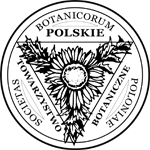Abstract
The influence of weed growth stage on the efficacy of selected herbicides applied at reduced doses was investigated under pot experiments at the Institute of Soil Science and Plant Cultivation - State Research Institute in Wrocław. Three weed species were used as tested plants: Anthemis arvensis L., Chenopodium album L. and Stellaria media L., which were sprayed at different growth stages: 2-4, 6-8, and 10-12 leaves. The experiment included the following herbicides: tribenuron-methyl, iodosulfuron methyl sodium + amidosulfuron, and metribuzin + amidosulfuron, used at full doses and reduced by 25 and 50%. Three weeks after treatment, fresh weight of weeds was determined. Weed control was significantly related to weed species, growth stage, type of herbicide and its dose. Among the tested weed species, S. media showed the weakest reaction to the herbicides used and it was only slightly affected by herbicide rate and growth stage. Later herbicide treatments, when the weeds reached the stage of 6-8 and 10-12 leaves, resulted in diversification at the level of herbicide effects and doses.
Keywords
weed growth stage; fresh weight reduction; herbicide; reduced dose






